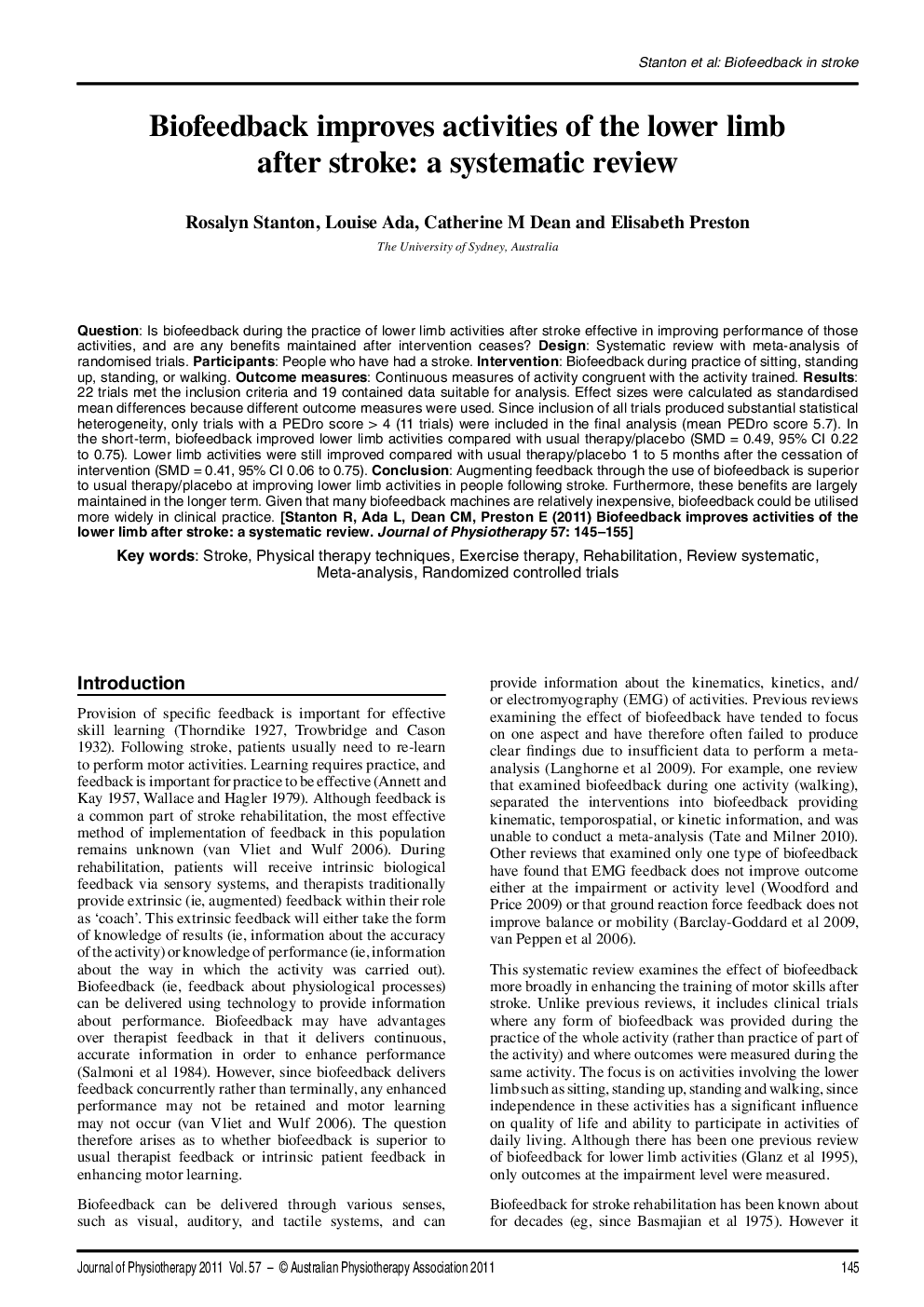| Article ID | Journal | Published Year | Pages | File Type |
|---|---|---|---|---|
| 2622473 | Journal of Physiotherapy | 2011 | 11 Pages |
QuestionIs biofeedback during the practice of lower limb activities after stroke effective in improving performance of those activities, and are any benefits maintained after intervention ceases?DesignSystematic review with meta-analysis of randomised trials.ParticipantsPeople who have had a stroke.InterventionBiofeedback during practice of sitting, standing up, standing, or walking.Outcome measuresContinuous measures of activity congruent with the activity trained.Results22 trials met the inclusion criteria and 19 contained data suitable for analysis. Effect sizes were calculated as standardised mean differences because different outcome measures were used. Since inclusion of all trials produced substantial statistical heterogeneity, only trials with a PEDro score >4 (11 trials) were included in the final analysis (mean PEDro score 5.7). In the short-term, biofeedback improved lower limb activities compared with usual therapy/placebo (SMD = 0.49, 95% CI 0.22 to 0.75). Lower limb activities were still improved compared with usual therapy/placebo 1 to 5 months after the cessation of intervention (SMD = 0.41, 95% CI 0.06 to 0.75).ConclusionAugmenting feedback through the use of biofeedback is superior to usual therapy/placebo at improving lower limb activities in people following stroke. Furthermore, these benefits are largely maintained in the longer term. Given that many biofeedback machines are relatively inexpensive, biofeedback could be utilised more widely in clinical practice.
